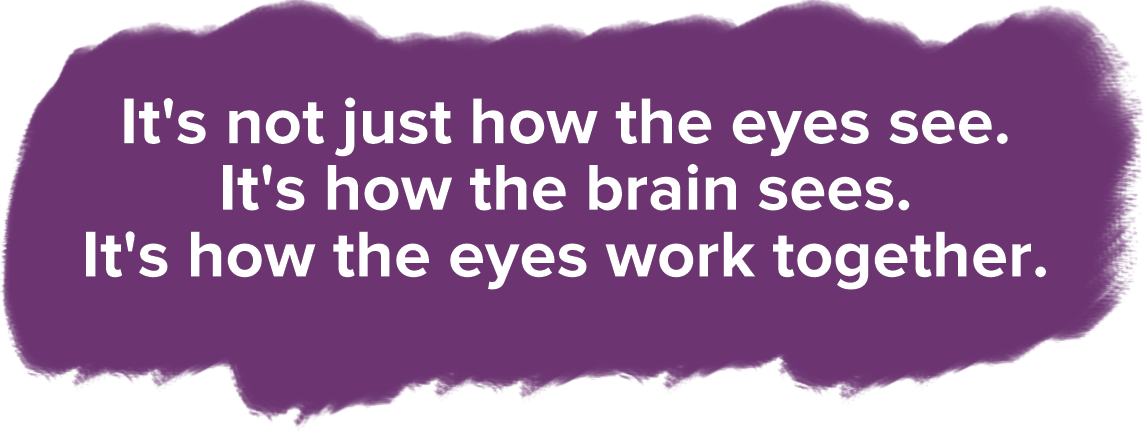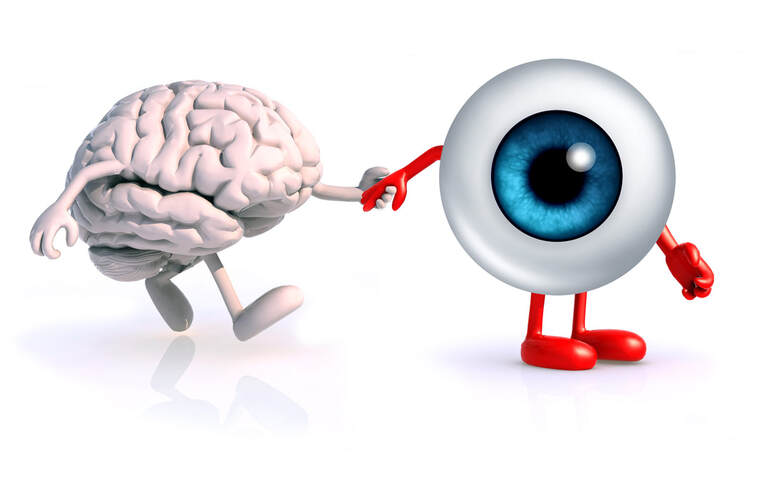"...but I had my son's eyes checked already!!!
he can see 20/20 on the eye chart..."
Not just an ordinary eye test...
A standard eye test looks at the sight of the eyes and the eye health.
A full vision assessment is specific and detailed, to determine:
The assessment takes up to an hour and also includes a full report which is sent to you following the appointment.
Key areas checked in the assessment:
· Visual acuity — the ability to see clearly in the distance for viewing the chalkboard, at an intermediate distance for the computer,
and up close for reading a book.
· Eye Focusing — the ability to quickly and accurately maintain clear vision as the distance from objects change, such as when
looking from the chalkboard to a paper on the desk and back. Eye focusing allows the child to easily maintain clear vision over
time like when reading a book or writing a report.
· Eye tracking — the ability to keep the eyes on target when looking from one object to another, moving the eyes along a printed
page, or following a moving object like a thrown ball.
· Eye teaming — the ability to coordinate and use both eyes together when moving the eyes along a printed page, and to be able to
judge distances and see depth for class work and sports.
· Eye-hand coordination — the ability to use visual information to monitor and direct the hands when drawing a picture or trying to
hit a ball.
· Visual perception — the ability to organize images on a printed page into letters, words and ideas and to understand and
remember what is read.
If any of these visual skills are lacking or not functioning properly, a child will have to work harder. This may lead to headaches, fatigue and other eyestrain problems.
Parents and teachers need to be alert for symptoms that may indicate a child has a vision problem.
A standard eye test looks at the sight of the eyes and the eye health.
A full vision assessment is specific and detailed, to determine:
- How the eyes work together as a team
- The range of clear vision for far and for close vision.
- How efficiently the eyes move from one item to the next when reading
- How the brain processes visual information
The assessment takes up to an hour and also includes a full report which is sent to you following the appointment.
Key areas checked in the assessment:
· Visual acuity — the ability to see clearly in the distance for viewing the chalkboard, at an intermediate distance for the computer,
and up close for reading a book.
· Eye Focusing — the ability to quickly and accurately maintain clear vision as the distance from objects change, such as when
looking from the chalkboard to a paper on the desk and back. Eye focusing allows the child to easily maintain clear vision over
time like when reading a book or writing a report.
· Eye tracking — the ability to keep the eyes on target when looking from one object to another, moving the eyes along a printed
page, or following a moving object like a thrown ball.
· Eye teaming — the ability to coordinate and use both eyes together when moving the eyes along a printed page, and to be able to
judge distances and see depth for class work and sports.
· Eye-hand coordination — the ability to use visual information to monitor and direct the hands when drawing a picture or trying to
hit a ball.
· Visual perception — the ability to organize images on a printed page into letters, words and ideas and to understand and
remember what is read.
If any of these visual skills are lacking or not functioning properly, a child will have to work harder. This may lead to headaches, fatigue and other eyestrain problems.
Parents and teachers need to be alert for symptoms that may indicate a child has a vision problem.



